How to collect data in the system?
This guide provides step-by-step instructions on how to collect data in ABA Matrix. It describes how to access the session, select observed behaviors, replacements, and skills, access the data collection tab, and how to collect data according to different measures such as frequency, percentage, intervals, and duration.
1. Access the scheduled session.
1. After creating the session, click on the scheduled day to edit the note you wish to modify.
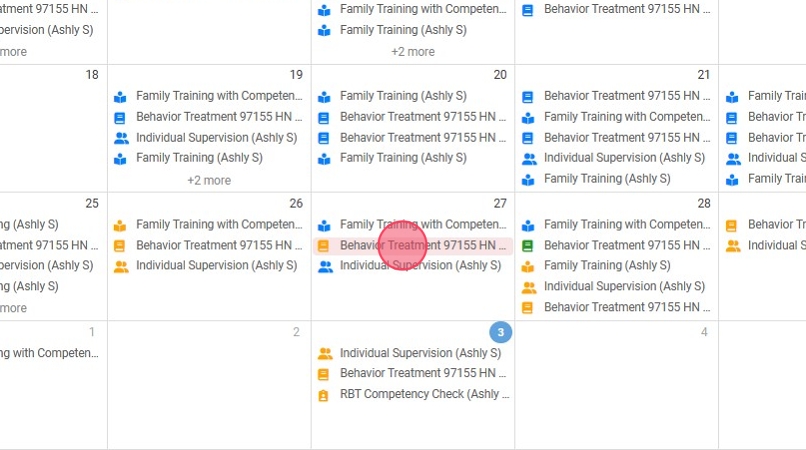
2. Access the session note through the "Go To Report" icon.
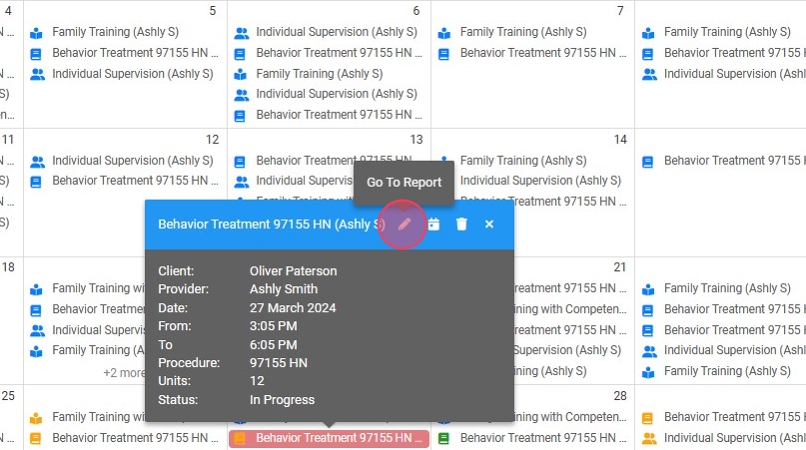
2. Select the Target Behaviors, Replacements, and Skills Observed.
3. From the Daily Log tab, locate the section titled "Target Behaviors, Replacements, and Skills Observed."

4. Upon locating the "Target Behaviors, Replacements, and Skills Observed" section, choose the behaviors, replacements, or skills that were observed during the session. You may select them all or individually.

3. Access the data collection tab.
5. From this tab, only the behaviors, replacements, and skills that were selected in the previous step will be available for data collection.
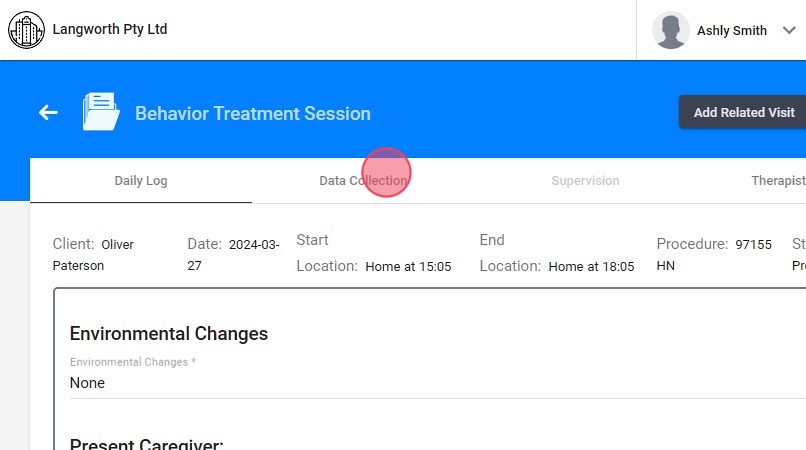
4. Access the observed Behavior, Replacement, or Skill.
6. By clicking on the desired behavior, replacement, or skill, you can view basic information about it.

- Current STO: Ongoing Short-Term Objective for the chosen behavior, replacement, or skill.
- Measure: Quantification of the chosen behavior, replacement, or skill.
- Baseline: Initial data point for the chosen behavior, replacement, or skill.
- Total: Cumulative data gathered during the session.
- Weekly: Data compiled over the week.
- Live Data Collection graph: This graph displays changes in real-time as data is recorded.
- % Progress: Proportion of goal completion.
- STO Met: Count of Short-Term Objectives met relative to the total set for the chosen behavior, replacement, or skill.
7. From the information icon at the right side of each behavior, replacement or skill, you'll see clinical information without leaving the note, like topography and functions for the maladaptives, and procedure, definition, barriers and functions for the replacements.

5. Collect data
The data collection process depends on the measurement of each selected behavior, replacement, or skill.
8. Frequency
To collect data on frequency, you should add the number of occurrences.
You can add and subtract occurrences using the "+" and "-" symbols, or type the number directly.
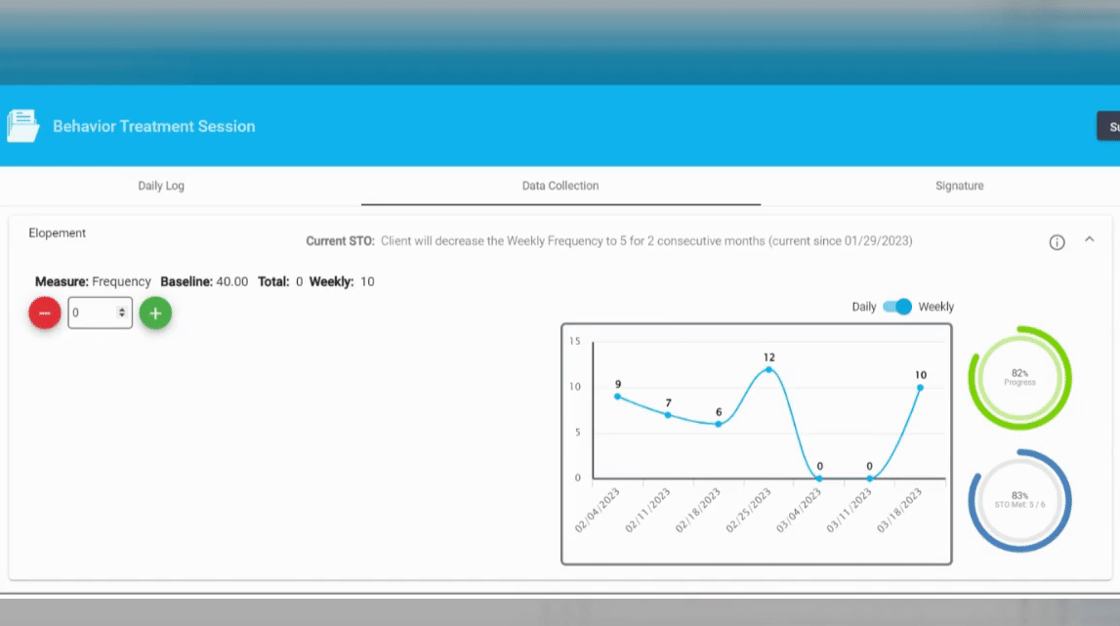
9. Percentage
To collect data as a percentage, you should first add the number of attempts, and then define which of those attempts were successful or not.
- The number of attempts is added in the same way as occurrences.
- To define whether an attempt was successful (YES) or not (NO), simply click on the attempt, and it will toggle between YES and NO.

10. Intervals
To collect data in intervals, you should first add the number of intervals, and then define in which ones the behavior occurred or not, similar to percentage.
- The number of intervals is added in the same way as attempts.
- To define whether the behavior occurred (YES) or not (NO) in a particular interval, simply click on the interval, and it will toggle between YES and NO.

11. Intensity
To collect data on intensity, you must first add the interval, and then define the intensity of each one.
- The number of intervals is added in the same way as attempts.
- To define the intensity of the interval, simply click on the interval until it reaches the correct intensity.
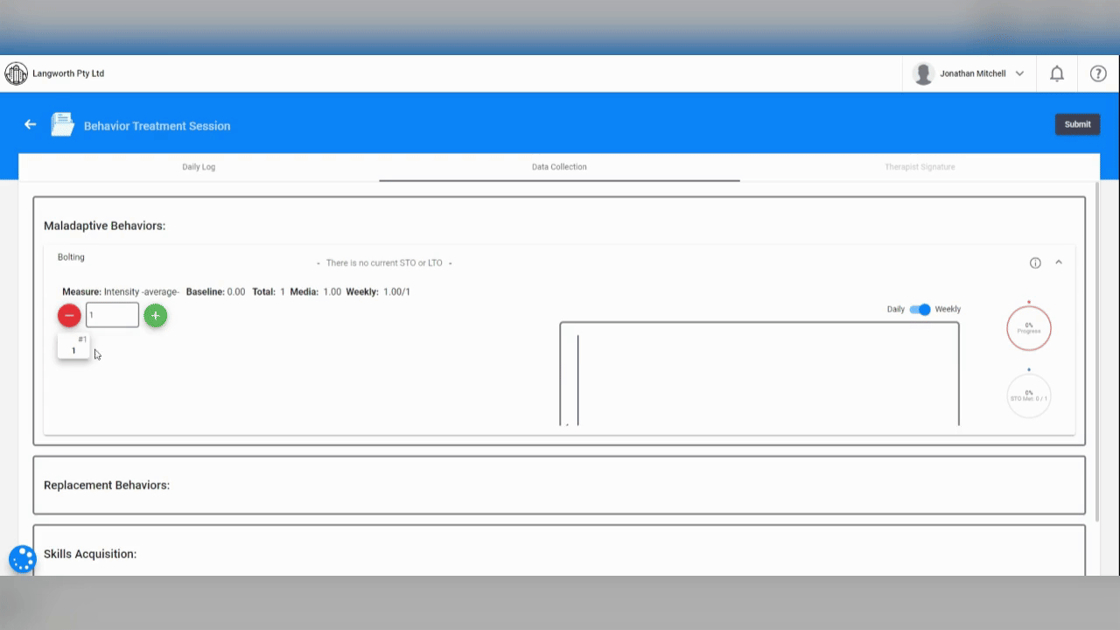
12. Time -seconds- / Time -minutes- / Time (sum) -min-
To collect data in time, whether in seconds or minutes, you should first add the number of occurrences, and then define the time for each of those occurrences.
- The number of occurrences is added in the same way.
- To define the time for each occurrence, you can use the symbol or enter it manually.

Time -seconds- : This measure records the duration in seconds. It is useful for precise measurement of short-duration behaviors.
Example: if a behavior occurs 5 times with durations of 10s, 12s, 8s, 15s and 11s, the average duration is (10 + 12 + 8 + 15 + 11) / 5 = 11.2 seconds.
Time -minutes-: the duration is recorded in minutes and the average duration is calculated.
Example: if a behavior occurs 3 times with durations of 5, 7 and 6 minutes, the average duration is (5 + 7 + 6) / 3 = 6 minutes.
Time (sum) -min-: Measures the total accumulated duration of a behavior in minutes across multiple instances throughout the session.
Example: if a behavior occurs with durations of 10 , 15 and 20 minutes over a session, the total time is 10 + 15 + 20 = 45 minutes.
13. Task Analysis:
To collect data using task analysis, you will have the steps previously established in the client's profile available, and you only need to select the prompt level for each task.

14. Rate -hours-
To collect data in rate according to the hours of visit duration, you only need to collect the number of occurrences during the session. In this case, the rate will be calculated based on the number of incidences over the duration of the session.

6. Save the changes
15. It's important to save the changes before exiting the note.
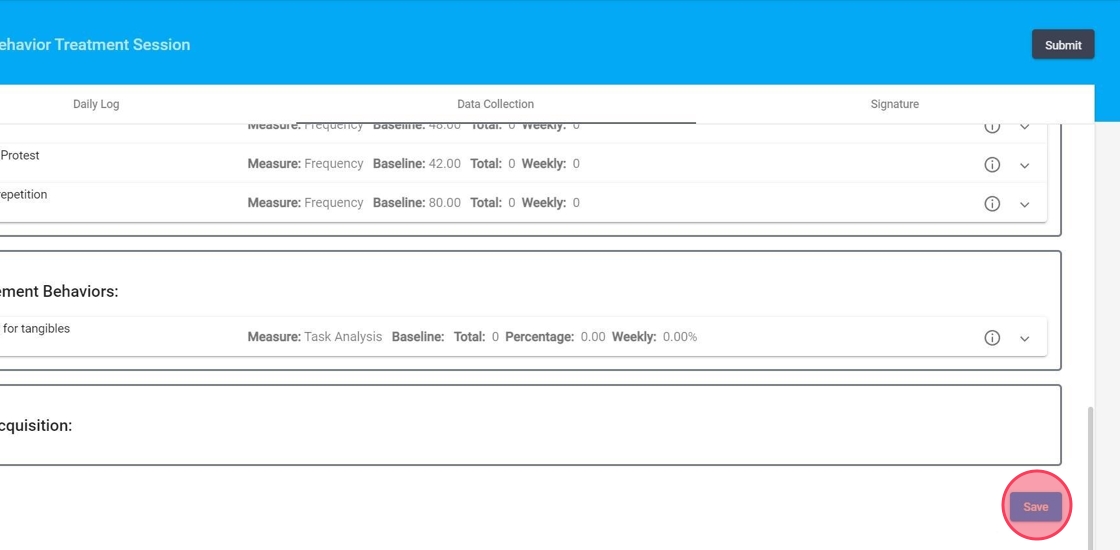
You can edit the collected information until the note reaches the 'Completed' status.
